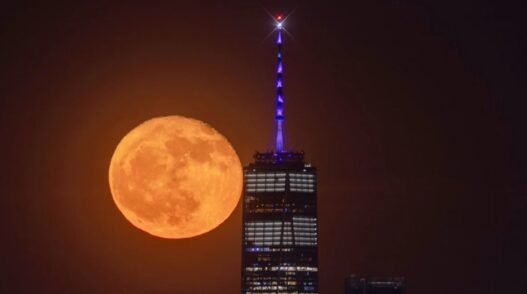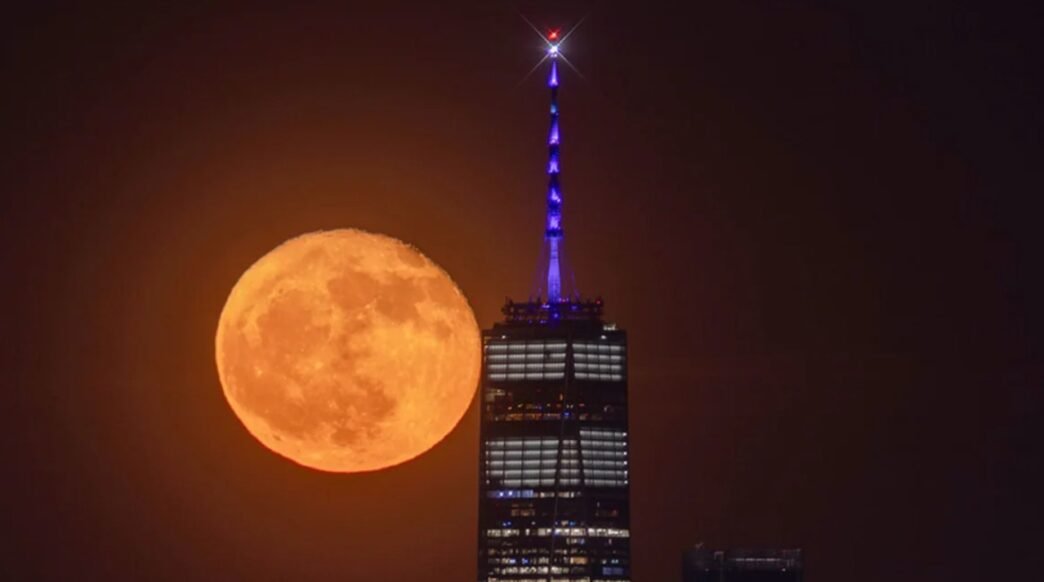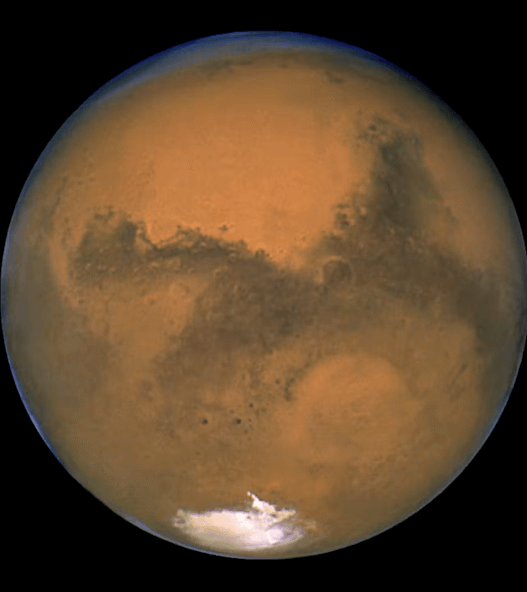The May Flower Moon 2025, known for its springtime bloom symbolism, will shine in the sky on Sunday night, May 11. Although it’s a micromoon, it will still offer a stunning view for sky enthusiasts.
According to EarthSky, the full moon peaks at 12:56 p.m. ET on May 12, but will look full on Sunday and Monday evenings.
Why Is It Called the May Flower Moon?
The May Flower Moon 2025 gets its name from spring blossoms. Various Native American tribes also have unique names:
-
Creek and Choctaw: Mulberry Moon
-
Cree: Frog Moon
-
Anishnaabe: Blossom Moon
-
Apache: Moon of Green Leaves
Each reflects seasonal changes observed in their regions.
What Makes the May 2025 Moon a Micromoon?
This Flower Moon is also a micromoon, meaning the moon is at its farthest distance from Earth. It will be 251,939 miles (405,456 km) away, versus the usual 238,855 miles (384,400 km), says NASA.
Because of this, it will look slightly smaller and dimmer in the night sky.
Best Time and Direction to Watch May’s Full Flower Moon
The May Flower Moon 2025 will rise low in the southeast after sunset on Sunday and reach its highest point after midnight.
To get the best view, find a clear, dark sky with low light pollution.
👉 For more celestial updates, visit our homepage: 1stNews24.com
Upcoming Full Moons After the May Flower Moon
After the final micromoon of the year, these full moons of 2025 are coming:
-
June 11 – Strawberry Moon
-
July 10 – Buck Moon
-
August 9 – Sturgeon Moon
-
September 7 – Corn Moon
-
October 6 – Harvest Moon (Supermoon)
-
November 5 – Beaver Moon (Supermoon)
-
December 4 – Cold Moon (Supermoon)
Supermoons will be especially large and bright in the last three months.
Lunar and Solar Eclipses Around May 2025
Total Lunar Eclipse – September 7–8
Visible from Europe, Asia, Africa, Australia, and more. This eclipse creates a Blood Moon effect as Earth’s shadow casts a red tint on the moon.
Partial Solar Eclipse – September 21
Watch the moon partially cover the sun, creating a dramatic crescent. Best visible in remote areas of Australia, Antarctica, and the Pacific Ocean.
Make sure to catch the May Flower Moon 2025, a perfect mix of astronomy and cultural heritage. Enjoy the final micromoon and stay tuned for more breathtaking sky events!





















